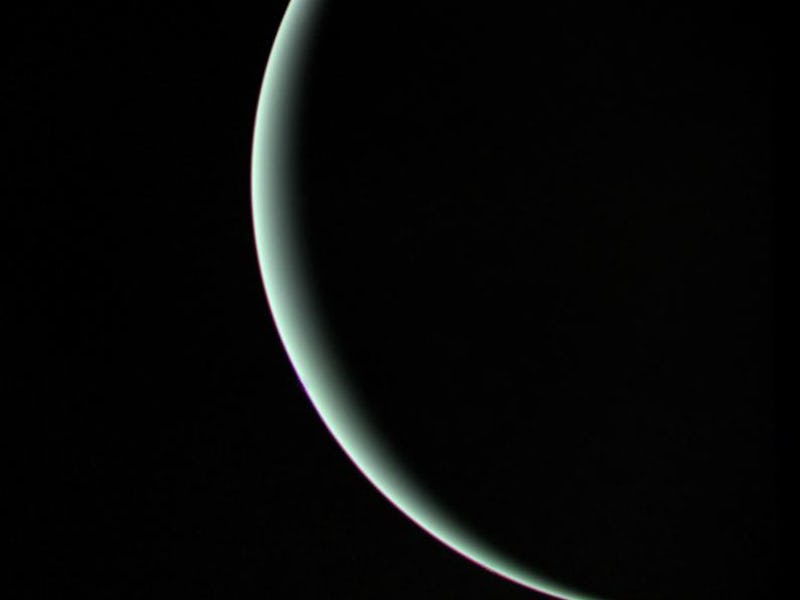You need to see the Solar System's weirdest planet shine at its brightest
Uranus will be in opposition over the nights of November 4 and November 5.

When it comes to planets of the Solar System, Uranus is definitely an oddball.
The seventh planet from the Sun is the only plant named after a Greek god (the rest get their names from Roman mythology). And unlike the rest of the planets, Uranus spins almost entirely on its side.
This strange space denizen is usually a faint sparkle in Earth’s night sky, but Uranus finally gets its chance to shine as it reaches the point of opposition — a special moment in its orbit of the Sun in relation to the Earth — on November 4 and November 5. During those days, the ice-giant planet will appear at its most luminescent for nighttime sky gazers.
What is “opposition” in astronomy?
A planet coming into opposition means that the planet is directly opposite to the Sun and perfectly aligned with both the Earth and our shared host star.
Uranus rotates on its side, and the rotation axis is almost parallel to its path around the Sun.
At a point during the outer planets’ orbit, the Earth will be wedged between the Sun and the other planet. This only occurs with planets further out from the Sun than Earth.
During the moment of alignment, the planet will appear at its brightest and at its largest in the night sky, appearing above the horizon and bathing in the Sun’s direct light.
This makes it an ideal time to observe the planet from Earth.
When is the planet Uranus at opposition?
Uranus will reach the point of opposition between November 4 and November 5.
The planet will rise in the eastern sky as the Sun sets in the west, and stay visible above the horizon all night long.
How to see Uranus at opposition in 2021
When it comes to observing the planets of the Solar System, Uranus is not in the top five of bright planets that appear easily in the night sky. This is in part due to its size, but also its distance from Earth.
During opposition, however, the planet will appear as if it were a faint star in the night sky. But even at its brightest, Uranus is still pretty faint. During opposition, the gas giant will shine at a magnitude of about 5.6 — for reference, Venus at its brightest has a magnitude of almost -5 on the stellar magnitude scale. Magnitude refers to how easy to see the object is for the naked eye in terms of brightness.
The constellation Cetus.
Luckily enough, Uranus’ opposition happens to fall around the same time as the New Moon.
A New Moon takes place when the Moon is wedged between Earth and the Sun, making the natural satellite barely visible to the naked eye. Uranus will be in the Aries constellation. In order to find the planet, look for the head of the whale in the constellation Cetus, which is made up of five stars in the shape of a pentagon, according to EarthSky.
During that time, the Moon’s light does not compete with other celestial objects in the sky and makes for the perfect time for a bit of stargazing.
If you happen to be in an area with very little light pollution and pitch-black skies, then there is a chance you may be able to spot Uranus with the naked eye.
Otherwise, it’s best to point a telescope, or even a pair of binoculars, at this distant planet.
Planet opposition dates in 2022
If you miss Uranus at opposition in 2021, do not fear. Uranus, Jupiter, Saturn, and Neptune enter opposition on an annual basis (Mars does not). Here’s a calendar for the opposition events in 2022:
- Saturn will be at opposition on August 14, 2022
- Jupiter will be at opposition on September 26, 2022
- Uranus will be at opposition on November 9, 2022
- Mars will be at opposition on December 8, 2022
This article was originally published on